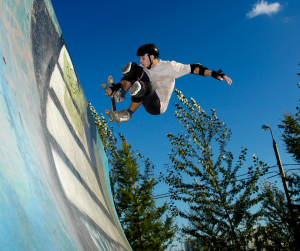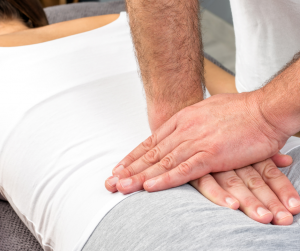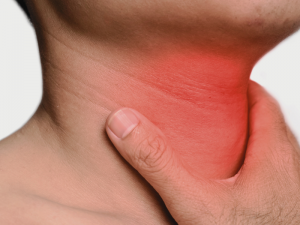The tailbone, or coccyx, sits at the very bottom of your spine, just below the sacrum. It’s a small, triangular bone that looks like a tiny tail. The coccyx is made up of 3 to 5 small bones, called coccygeal vertebrae, which are held together by ligaments.
The function of the coccyx/tailbone
- Even though the tailbone isn’t essential for survival, it still has some important roles.
It helps support your body when you’re sitting and provides an attachment point for various muscles in the pelvic area, which support organs like the anus and, in women, the vagina. When you move, your tailbone moves slightly too, helping to keep your body balanced

What is coccyx/tailbone pain?
Tailbone pain, medically known as coccydynia, happens when the bones or surrounding tissues are damaged or inflamed. This pain is most noticeable when you sit down or stand up.
Symptoms Tailbone Pain
- Pain: A dull, achy feeling at the tip of the tailbone, deep between the buttocks above the anus.
- Worsening Pain When Sitting: Sitting down usually makes the pain worse.
- Other Possible Symptoms: Muscle weakness, loss of sensation, digestive issues, and pain in the rectum, depending on the cause.
Who gets it? Are you at risk?
Gender and Anatomy
- Women: More common in women due to their pelvic anatomy and the stress of pregnancy and childbirth.
Trauma
- Injuries: Falls or impacts during activities like skiing, skateboarding, or horse riding can injure the tailbone.

Sports
- Repetitive Strain: Sports like rowing, cycling, and horse riding can cause strain and pain due to repetitive motions.
Posture
- Poor Sitting Posture: Sitting on hard surfaces or with added weight on your lap can increase pressure on the tailbone. Slumping in chairs or sitting for long periods can also cause irritation.
Weight
- Underweight: Lack of cushioning can lead to more friction on the tailbone.
- Overweight: Extra weight can put more pressure on the tailbone, causing pain or worsening existing conditions.
Degeneration or Osteoarthritis
- Age or Injury: Age-related changes or injuries can lead to tailbone pain.
Infection
- Rare: Sometimes, pain can be a sign of an infection near the tailbone.
Diagnosis & Treatment
Diagnosis
- Examination: Checking the external tailbone area for bruises, tenderness or muscles in balances.
- Internal Check: Sometimes, an internal check through the anus is needed.
- Imaging: X-rays or MRI scans may be used to rule out serious conditions.
Treatment
A tailbone injury can be excruciatingly painful and slow to heal. Recovery depends on the severity of the injury; expect bruising to recover in four weeks and a fracture between 8 – 12 weeks, but pain can linger for much longer.
- Pain Relief: Painkillers or anti-inflammatory medications are commonly prescribed.
- Manual Therapy: Treatments like osteopathy can help, especially if tight muscles are contributing to the pain.

How an Osteopath Can Help
Osteopaths use a variety of hands-on techniques to relieve pain and improve function. For coccyx pain, they may employ:
- Soft Tissue Manipulation: Gentle massage and stretching of the muscles and ligaments around the coccyx to reduce tension and improve blood flow.
- Joint Mobilisation: Carefully moving and stretching the joints to improve mobility and alignment in the lower spine and pelvic region.
- Myofascial Release: Applying gentle pressure to the connective tissues to release tension and improve flexibility.
Exercise and Rehabilitation
Specific exercises and stretches can help strengthen the muscles around the coccyx, improve flexibility, and promote healing. An osteopath will tailor a rehabilitation programme to your needs, ensuring you perform exercises correctly and safely.
Internal Release
Sometimes an internal release of the coccyx will help; it’s a quick, painless procedure that can give instant relief.
Injections
Corticosteroid injections or nerve blocks may be recommended.
Surgery
If other treatments fail, surgery to remove the tailbone (coccygectomy) may be considered, but it’s rarely done due to the long and uncomfortable recovery period.
Self-help Tips
- Cushions: Using a coccyx wedge cushion can relieve pressure when sitting.
- Diet: Avoid constipation by staying hydrated and eating enough fibre.
- Posture: Be mindful of your posture to reduce strain on the tailbone.
- Sitting is the primary aggravating factor; using a coccyx wedge cushion can be helpful; it has a cutout at the back, so the tailbone is free of weight-bearing.
- Avoiding constipation and keeping the stool soft is essential for people who experience coccyx pain with bowel movements and staying hydrated, and getting enough fibre in the diet.
- Alignment and posture play a significant role in relieving the stress of the coccyx. People are often unaware of how they may irritate their coccyx while doing simple daily activities such as sitting at work, riding their bike or watching their favourite TV programme relax on their sofa.
Final Thoughts
Coccyx pain can be a persistent and uncomfortable condition, but with the right care, relief is possible. Osteopaths offer a holistic, non-invasive approach to managing and alleviating coccyx pain, focusing on manual therapy, posture correction, and tailored exercise programmes. If you’re struggling with tailbone pain, consider consulting an osteopath to explore the benefits of this natural and patient-centred treatment approach.







